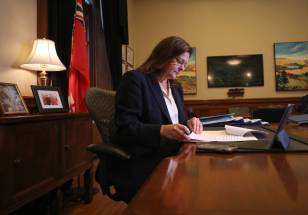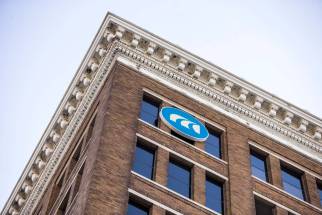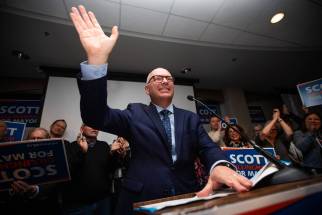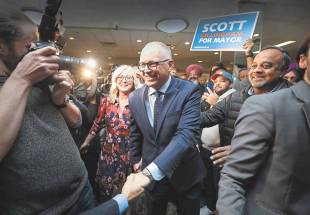Urban-sprawl challenge awaits new mayor
Read this article for free:
or
Already have an account? Log in here »
To continue reading, please subscribe:
Monthly Digital Subscription
$0 for the first 4 weeks*
- Enjoy unlimited reading on winnipegfreepress.com
- Read the E-Edition, our digital replica newspaper
- Access News Break, our award-winning app
- Play interactive puzzles
*No charge for 4 weeks then price increases to the regular rate of $19.00 plus GST every four weeks. Offer available to new and qualified returning subscribers only. Cancel any time.
Monthly Digital Subscription
$4.75/week*
- Enjoy unlimited reading on winnipegfreepress.com
- Read the E-Edition, our digital replica newspaper
- Access News Break, our award-winning app
- Play interactive puzzles
*Billed as $19 plus GST every four weeks. Cancel any time.
To continue reading, please subscribe:
Add Free Press access to your Brandon Sun subscription for only an additional
$1 for the first 4 weeks*
*Your next subscription payment will increase by $1.00 and you will be charged $16.99 plus GST for four weeks. After four weeks, your payment will increase to $23.99 plus GST every four weeks.
Read unlimited articles for free today:
or
Already have an account? Log in here »
Hey there, time traveller!
This article was published 28/10/2022 (1135 days ago), so information in it may no longer be current.
Welcome to the very big job, Mayor-elect Scott Gillingham.
That giant file on your desk is a city-planning problem that has drained the public purse for more than five decades and will make achieving the goals on which you based your election campaign a far more difficult task than was your successful effort to get elected.
Winnipeg’s problems begin downtown, an area relatively few people call home these days and where the traditional businesses that used to serve those who did, such as supermarkets, have moved to the city’s outer edges where most Winnipeggers now choose to reside.
Instead of being a place to call home, downtown has become mostly an occasional destination: where a decreased number (thanks to the pandemic) of Winnipeggers work during the day, and in the evening a place where some are entertained watching hockey games or attending concerts.
The root of Winnipeg’s endemic difficulties began shortly after the Second World War, as was pointed out in a Free Press report published days before Mr. Gillingham’s narrow civic-election victory. It has been resistant to revitalization remedies, owing mostly to a lack of political will to address them.
RUTH BONNEVILLE / WINNIPEG FREE PRESS Winnipeg Mayor-elect Scott Gillingham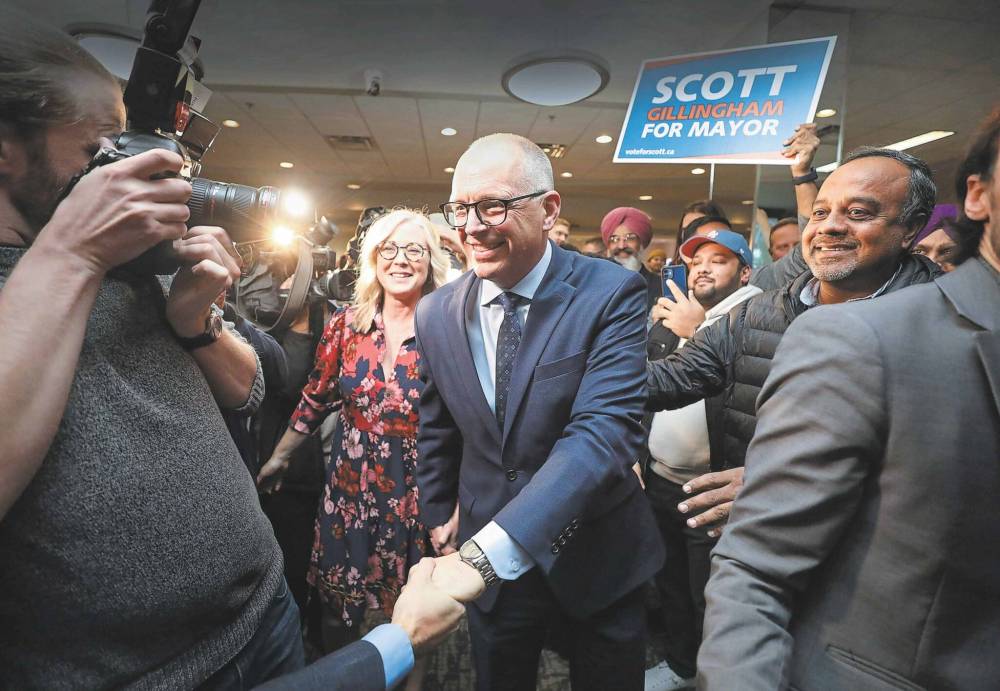
Winnipeg prospered in the post-war years, and so did its citizens, and many chose to move to growing neighbourhoods further from the downtown, such as River Heights, or in municipalities on Winnipeg’s borders: St. James-Assiniboia, St. Vital, Fort Garry or Transcona.
When Unicity brought those communities — 12 in total — into Winnipeg’s boundaries and purview in 1972, the historic initiative also brought their residents’ demands and influence along with them.
The suburbs hold the political power in Winnipeg now, so much so that a 2018 plebiscite to open Portage and Main to pedestrians was soundly defeated, owing mostly to “no” votes from suburban dwellers, many of whom seldom venture through the city’s most famous intersection.
Meanwhile, growth on Winnipeg’s edges forges on. Developers create the roads, sewer and other neighbourhood necessities in new areas such as Waverley West, but it’s the city’s job to maintain them, and it has to spread its maintenance budget thinner and thinner with each new road built and each new pipe laid.
As Winnipeg has borne the burden maintaining the infrastructure in all of these growing communities, the fiscal consequences have finally come home to roost. The city no longer has the tax base to maintain its sprawling infrastructure.
As Winnipeg has borne the burden maintaining the infrastructure in all of these growing communities, the fiscal consequences have finally come home to roost. The city no longer has the tax base to maintain its sprawling infrastructure.
The numbers prove it: a financial update revealed the city is on its way to a $55.9-million operating deficit.
So does the eye test: Winnipeg’s older neighbourhoods, most notably downtown, look more downtrodden than ever, especially after the economic after-effects of the COVID-19 pandemic forced many stores to close and left 1.5 million square feet of office space vacant.
In seeking election, Mr. Gillingham pledged to widen Kenaston Boulevard and extend Chief Peguis Trail to improve traffic flow — again, far from the city’s core — as well as making much-needed improvements to the city’s active transportation network. To pay for his promises, he said, he would raise property taxes by 3.5 per cent in each of the next four years and hike frontage fees.
Whether those tax increases will effectively address Winnipeg’s long-standing infrastructure deficit remains to be seen, but there’s encouragement in the fact voters had the benefit of knowing the future cost of his promises.
Mr. Gillingham can begin the process of turning promises into progress by convincing the rest of city council — almost all of whom are re-elected incumbents — that addressing Winnipeg’s endemic planning challenge is a necessary first step toward a more financially sustainable city.


